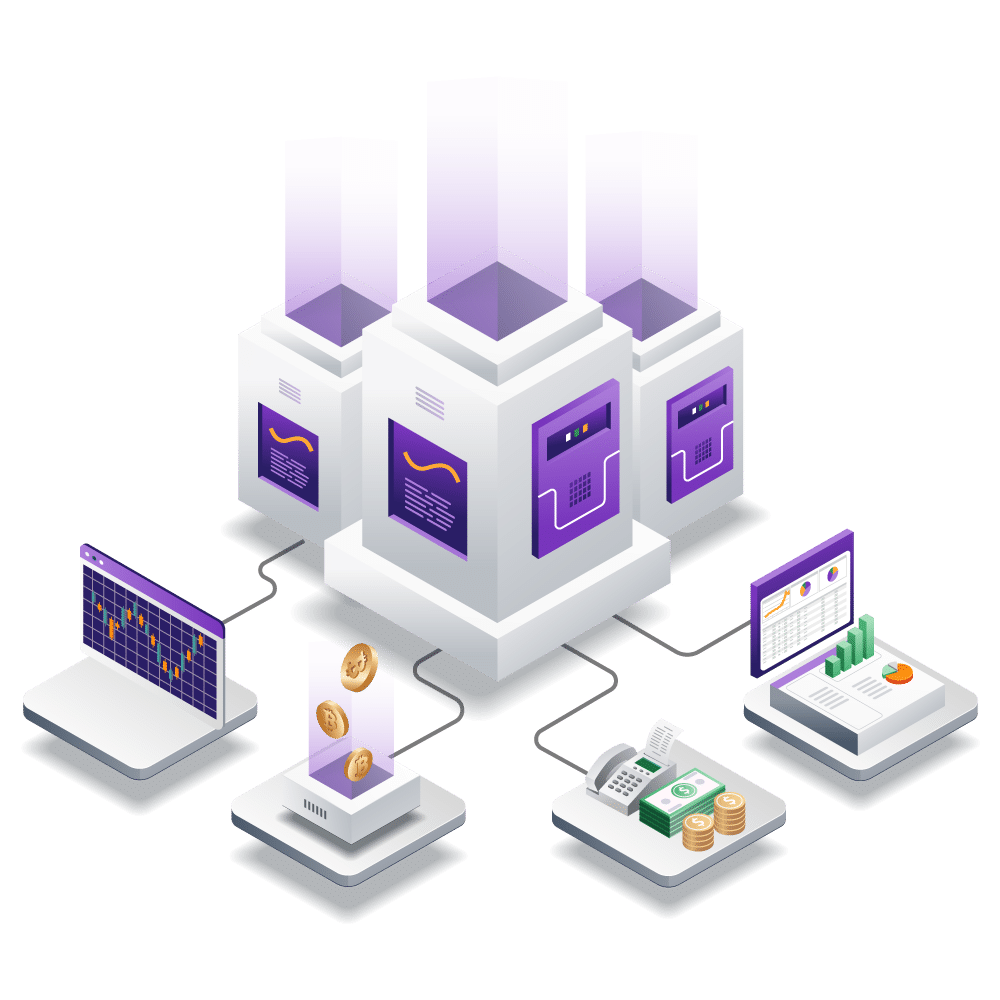Yield Farming – The new DEFI Frontier
Yield Farming – The new DEFI Frontier
Yield Farming – The new DEFI Frontier

Overview
The world of decentralized finance (DeFi) is booming and the numbers are only trending up. According to DeFi Pulse, there is $95.28 billion in crypto assets locked in DeFi right now – up from $32 billion the year before. Leading the DeFi race is the Ethereum-based Maker protocol, with a 17.8% share of the market.
One of the main catalysts for this sector’s exponential growth can be attributed to an ROI-optimizing strategy unique to DeFi known as yield farming.
DeFi pulse estimated that 95% of the USD 41.5 billion total value locked (TVL) in the DeFi economy is attributed to yield farming. The CoinMarketCap data states that the total locked value of liquidity pools in yield farming projects reached beyond 13 billion dollars in March 2021.

How did it start?
Ethereum-based credit market Compound started distributing COMP to the protocol’s users in June, 2020. This is a type of asset known as a “governance token” which gives holders unique voting powers over proposed changes to the platform. Demand for the token (heightened by the way its automatic distribution was structured) kicked off the present craze and moved Compound into the leading position in DeFi at the time.
Ok, So what is Yield Farming After All?
Yield farming is a means of earning interest on your cryptocurrency, similar to how you’d earn interest on any money in your savings account. And similarly to depositing money in a bank, yield farming involves locking up your cryptocurrency, called “staking,” for a period of time in exchange for interest or other rewards, such as more cryptocurrency.
When traditional loans are made through banks, the amount lent out is paid back with interest. With yield farming, the concept is the same: cryptocurrency that would normally just be sitting in an account is instead lent out in order to generate returns. Since yield farming began in 2020, yield farmers have earned returns in the form of annual percentage yields (APY) that can reach triple digits. But this potential return comes at high risk, with the protocols and coins earned subject to extreme volatility and rug pulls
The term farming implies the high interest produced via the liquidity of different DeFi protocols. Along with rewards, DeFi protocols issue tokens that represent user’s share in the liquidity pool, which are moveable to other platforms for increasing their potential gains.
In a DeFi ecosystem, yield farmer performs the role of banks to lend funds for using the tokens to yield maximum returns. The entire ecosystem runs with the help of blockchain-based smart contracts, connecting the borrowers and lenders while handling the investors’ rewards.
Yield Farming and AMM
Yield Farming is supported by Automated Market Makers or AMMS. So you would wonder what is an AMM after all.
A new type of exchange has rippled through DeFi—automated market makers (AMMs). Where a traditional exchange needs a market maker to ensure its orderbook is liquid, AMMs pool liquidity from various users and execute it based on a given equation. This equation varies for each AMM.
To understand liquidity provision, one must first understand how AMMs work
Uniswap is the largest AMM, so we’ll start there. Each Uniswap pool has two assets that equally contribute to the pool in a 50-50 allocation. Uniswap’s pools are designed using the equation of X x Y=K.
X is the quantity of the first token, Y is the quantity of the second token, and K is the product of the two, which is to remain constant. This is aptly named the constant product equation.
Let’s say there’s an ETH-USDC liquidity pool with 100 ETH and 1000 USDC on Uniswap. The constant product is 1,000,00 (100 x 1000) and the implied price is 10 USDC per ETH.
Somebody wants to buy 10 ETH from the pool; X (amount of ETH) will decrease from 100 to 90. So if K is to remain constant at 100000, Y must increase to 1112 (100,000/90).
At the end of it all, there’s 90 ETH and 1000 USDC in the pool, implying a price of 11 USDC per ETH. That one trade caused a 10% increase in the price of ETH through slippage.


How does Yield Farming Work?
Yield farming majorly involves the role of liquidity pools and liquidity providers. A user who deposits the cryptocurrencies in the smart contract is known as Liquidity Provider, while smart contracts are nothing but liquidity pools. These pools exist on specialized decentralized exchanges known as Automated Market-Maker (AMM). For example, the platforms like Uniswap, Curve and Balancer allow traders to swap tokens by depositing one token into the pool and getting the proportionate amount of the other in exchange. They pay a small fee to execute the transaction, which gets distributed into the entire liquidity pool. Liquidity providers earn this fee.

How do yield farmers earn a return on investment?
In yield farming, the return on investment falls into the following three categories.
01 Transaction fee income
Transaction fees show variation with different protocols and pools. For example, the fee set at the stage of pool creation by the user in the Balancer pool shows variation between 0.001% and 10%. Other pools like Uniswap charge a flat fee of about 0.03%. All fees are passed to liquidity providers. Hence, it is likely that governance token holders will receive a portion of the proceeds in the future.
02 Token rewards
Token rewards are used in the form of incentives to offer liquidity. These rewards get distributed over a specific period of weeks, months or even years. The tokens rewarded are often used to govern the system during issuance at any time. These tokens are traded on decentralized exchanges as well as on some centralized exchanges like Coinbase.
03 Capital growth
Capital growth helps to compute the profitability of any challenging yield farming opportunity. When the yield farming strategy involves BTC, REN, SNX and CRV assets, they become volatile and can move without correlation. Therefore, it is essential to adopt yield farming strategies that align positively with involved tokens like stablecoins to avoid volatility.


Show me the money !!!
So you may wonder, how much money can I earn via Yield Farming. Let’s use Compound as an illustration. As of January, 2022, a person can put USDC or tether (USDT) into Compound and earn around 3% on it. Most U.S. bank accounts earn less than 0.1% these days, which is close enough to nothing
However everything is not as rosy as it appears. DeFi is a far riskier place to park your money. There’s no Federal Deposit Insurance Corporation (FDIC) protecting these funds. If there were a run on Compound, users could find themselves unable to withdraw their funds when they wanted.
Similarly, a user might get tempted by assets with more lucrative yields like USDT, which typically has a much higher interest rate than USDC. The trade-off here is USDT’s transparency about the real-world dollars it’s supposed to hold in a real-world bank is not nearly up to par with USDC’s.
Which are the most popular Yield Farming Protocols?
Yield farmers sometimes use DeFi platforms that offer various incentives for lending to optimize the return on their staked coins. Some of the most popular Yield Farming Protocols are as follows :
01 Aave
Aave is an open source liquidity protocol that lets users lend and borrow crypto. Depositors earn interest on deposits in the form of AAVE tokens.
02 Compound
Compound is an open source protocol built for developers that uses an algorithmic, autonomous interest rate protocol to determine the rate depositors earn on staked coins.
03 Curve Finance
Curve Finance is a liquidity pool on Ethereum that uses a market-making algorithm to let users exchange stablecoins.
04 Uniswap
Uniswap is a decentralized exchange where liquidity providers must stake both sides of the pool in a 50/50 ratio. In exchange, you earn a portion of the transaction fees plus UNI governance tokens.
05 Instadapp
Instadapp is designed for developers and allows users to build and manage their decentralized finance portfolio.


How do I build a Yield Farming App?
If you are a start-up or an established organization planning to build your DeFi yield farming platform, AARCHIK Solutions can assist you in your venture. We offer the most comprehensive DeFi yield farming services – from building a smart contract-driven liquidity pool to solution implementation and deployment. We can help you leverage ingenious solutions to create an exceptional user experience and improve time to market.
The highlights of our process for building Yield Farming App are as follows :
01 Needs Analysis
We work hands-on with our clients to comprehend their needs and contextualize crypto and blockchain for their business.
02 Advisory Services
Our strategy and advisory services help clients gauge organizational readiness, anticipate the business impact, and devise a go-to-market plan.
03 Execution
We design and architect the DeFi yield farming platform, leveraging our rich domain knowledge and breadth of expertise.
04 Business Deployment
We constantly deliver our services and support even after product deployment to ensure that our solutions have a tangible impact on our clients’ businesses.
Conclusion
Yield Farming is very effective to increase your returns on your tokens if you can navigate the volatile cryptocurrency markets. If combined with Fractional NFTS which you can invest in real estate and use effective yield farming algorithms to earn decent returns. Further yield farming also has some interesting use cases in networking marketing space where you can provide loans in crypto tokens in your network below your genealogy and then earn returns from your network.
AARCHIK, created a whole Web3.0 Ecosystem wherein we implemented yield farming for our client in the networking space. The complete ecosystem has tools and functionalities governed by different smart contracts and has interesting applications of real estate in Metaverse. You can know more here : aarchik.com/portfolio-item/blockchain-based-networking-system. To know more do write to us at : [email protected]
Have an Inquiry?

Mithun S
Mithun is an avid technology geek at heart and is deeply interested in AI, Metaverse and other emerging technologies. He heads the R&D Practice at AARCHIK Solutions









